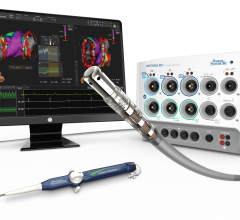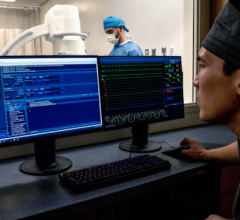July 21, 2011 – Concentric Medical Inc. announced the launch of the expanded family of Merci Retrievers in Japan for the treatment of ischemic stroke. With the addition of the V 2.0 Soft and V 3.0 Soft, through recent Ichihen Approval, the entire family of V Series Merci Retrievers are now approved and reimbursed in Japan. The Merci Retriever is a catheter-based medical device that stroke centers use to remove blood clots from the brains of patients suffering an ischemic stroke.
July 20, 2011 –ScImage recently launched PicomCloud, a complete, self-service cloud picture archiving and communication system (PACS) for radiology, cardiology and other clinical specialties.
July 20, 2011 — IDEV Technologies Inc. announced the completion of enrollment in the SUPERB trial, a U.S. Food and Drug Administration (FDA)-approved IDE trial evaluating the use of IDEV's Supera stent system for treatment of peripheral artery disease (PAD) in the superficial femoral artery (SFA). Enrollment was completed in May, making SUPERB one of the fastest-enrolling SFA trials.
Providing exceptional cardiovascular care for patients to achieve the best possible outcomes is the number one goal for ...
July 20, 2011 — Ziehm Imaging reports a huge increase in demand for its training programs. In 2010 alone, the number of participants doubled for technical courses given by the mobile C-arm manufacturer.
July 19, 2011 — Terumo Heart Inc., a wholly owned subsidiary of Terumo Corp., today announced that a patient implanted with the DuraHeart left ventricular assist system (LVAS) has surpassed five years of support on the mechanical circulatory support device. Helga Gieseke, living in Germany, was treated at The Deutsches Herzzentrum Berlin (DHZB, German Heart Institute Berlin) and is now one of the longest-living heart failure recipients of the DuraHeart LVAS device.
July 19, 2011 — An article published in the July issue of the Journal of Heart and Lung Transplantation reports the first use of the Freedom portable driver with a Total Artificial Heart (TAH-t) patient. The TAH-t is manufactured by SynCardia Systems Inc.
Cardiac positron emission tomography (PET) is growing in popularity among cardiologists because it provides the ability ...
July 19, 2011 - The Society of Cardiovascular Computed Tomography (SCCT) announces the first SCCT Arthur S. Agatston Cardiovascular Disease Prevention Award, recognizing individuals whose pioneering efforts have saved lives from coronary artery disease (CAD). Arthur Agatston, M.D., presented the award to the first recipients at the SCCT annual scientific meeting in Denver, Colo., on Saturday, July 16, 2011.
July 18, 2011 — NSVascular Inc., a newly formed subsidiary of NeuroSigma Inc., has signed an exclusive license with the University of California Los Angeles (UCLA) covering its medical applications of thin-film nitinol (TFN) technology.
July 18, 2011 — OrbusNeich announced that data from an ex vivo arteriovenous (AV) shunt model of human circulating blood, in addition to results from three preclinical studies, demonstrated that the Genous Stent effectively captures circulating CD34+ endothelial progenitor cells (EPCs). This leads to accelerated re-endothelialization and decreased thrombogenicity compared to bare metal stents (BMS). These mechanistic data were published as an e-publication on the European Heart Journal website.
When performing radiofrequency (RF) ablation to treat cardiac arrhythmia, medical professionals must balance the safety ...
July 18, 2011 — An article published in the European Journal of Cardio-Thoracic Surgery demonstrates the importance of a comprehensive epicardial lesion pattern to confirm conduction block in radiofrequency ablation for the successful treatment of persistent atrial fibrillation (AF). The epicardial ablation device is manufactured by nContact Inc.

Coronary revascularization does not always lead to coronary reperfusion. When readily available, percutaneous coronary intervention (PCI) using primary balloon angioplasty, with or without use of stenting, is the standard of care for ST-segment elevation myocardial infarction (STEMI). However, there is a group of patients who seem not to benefit fully from prompt restoration of antegrade flow, as they fail to show resolution of the indirect signs of ischemia such as electrocardiographic (ECG) changes and improvements in perfusion abnormalities.[1,2] These patients also present an angiographic phenomenon characterized by evidence of slow-flow in the affected vessel (Thrombolysis in Myocardial Infarction [TIMI] flow equal to or less than 2) and lack of contrast uptake “blush” by the subtended myocardium, leading to a potential dissociation between coronary revascularization and myocardial perfusion in STEMI.
Digging through boxes, waiting for couriers, finding smashed VHS tapes in the mail, jockeying back and forth between multiple modalities. Like at other hospitals across the country, the manual, tape- and film-based workflow in the pediatric cardiology department at Mercy Children’s Hospital in Toledo, Ohio, had stagnated, quadrupling the time it should have taken the cardiologists to read echocardiograms for the hospital and four outreach centers, resulting in a report turnaround time that could be as long as five to seven days.
Change Healthcare Cardiology Hemodynamics is an integrated hemodynamic monitoring system for monitoring vital signs and ...
Swedish SCAAR Registry data were presented in May during the EuroPCR meeting in Paris. The 30-day ST-elevated myocardial infarction (STEMI) mortality was 4.4% in the femoral access group vs. 3.2% in the radial access group (adjusted odds ratio 0.57, p<0.01). The benefit of radial approach was present at one year as well (7.3% femoral vs. 6.2% radial mortality, adjusted OR 0.78, p=0.018).
A review of recent transradial study data.

Transradial catheterization is increasingly becoming the access site of choice for many hospitals throughout the United States. Completing the procedure through the arm offers greater satisfaction for the patient as a result of increased comfort and patient mobility compared to femoral artery access. Radial artery access for cardiac catheterization is associated with a different set of complications and although infrequent, they present a challenge to cath lab staff to manage and prevent these issues as they appear. Education about the benefits and challenges of transradial catheterization is an important tool to nurses and technologists as they transition to cardiac catheterization through the wrist. This article will discuss patient satisfaction of radial versus femoral artery access and two of the most prevalent complications of transradial catheterization.


 July 21, 2011
July 21, 2011













